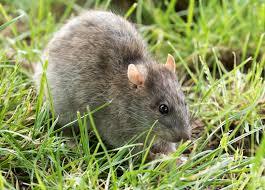A new study conducted by Yale’s Akiko Iwasaki, the Waldemar Von Zedtwitz Professor of Immunobiology found that intranasal vaccination provided broad-based protection against heterologous respiratory viruses in mice. The research has been published in the ‘Science Immunology Journal’.
Iwasaki, senior author of the study said, “The best immune defence happens at the gate, guarding against viruses trying to enter.”
Now Mucous membranes contain their own resistant defence system that battle air- or foodborne pathogens. When they are challenged these barrier tissues produce B cells which in turn conceal immunoglobin A (IgA) antibodies.
Like vaccines which produce a system-wide immune response, IgA antibodies work locally on mucosal surfaces found in the nose, stomach, and lungs. While the defensive role of IgA-producing cells had been well established in fighting intestinal pathogens, Iwasaki’s lab wondered if activating IgA response might also produce a localized immune response against respiratory viruses.
Working with experimenters at Icahn School Working with experimenters at Icahn School of Medicine at Mount Sinai in New York, they tested a protein- grounded vaccine designed to jump- start an IgA vulnerable response, administering it to mice through injections, as is generally done with systemic immunizations, and also intranasally.
They also exposed mice to multiple strains of influenza contagions. They plant that mouse that had entered vaccine intranasally were much better defended against respiratory influenza than those that entered injections.
Nasal vaccines, but not the shot, also convinced antibodies that defended the creatures against a variety of flu strains, not just against the strain the vaccine was meant to cover against. The Yale platoon is presently testing nasal vaccine strains against Covid strains in beast models.
Drug at Mount Sinai in New York, they tested a protein- grounded vaccine designed to jump- start an IgA vulnerable response, administering it to mice through injections, as is generally done with systemic immunizations, and also intranasally.
They also exposed mice to multiple strains of influenza contagions. They plant that mice that had entered vaccine intranasally were much better defended against respiratory influenza than those that entered injections.
Nasal vaccines, but not the shot, also convinced antibodies that defended the creatures against a variety of flu strains, not just against the strain the vaccine was meant to cover against. The Yale platoon is presently testing nasal vaccine strains against Covid strains in beast models.
“While both vaccine injections and nasal vaccines increased levels of antibodies in the blood of mice, only the nasal vaccine enabled IgA secretion into the lungs, where respiratory viruses need to lodge to infect the host,” Iwasaki said.
If the nasal vaccines prove to be safe and efficient in humans, Iwasaki envisions them being used in conjunction with current vaccines and boosters that work system-wide in order to add immune system reinforcements at the source of infection.











